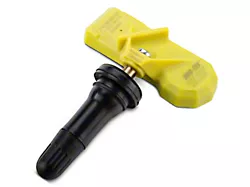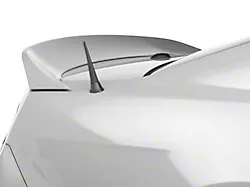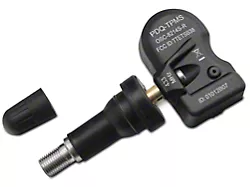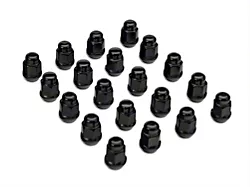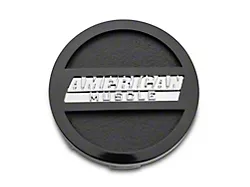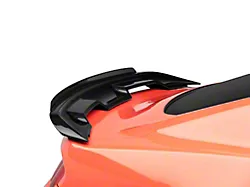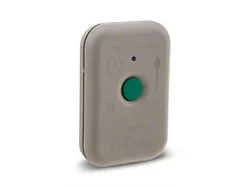
Best Sellers
How To Install a Roush Front Chin Splitter on your 2013-2014 GT, V6, Boss Mustang
Installation Time
1 hours
Tools Required
- Roush Front Chin Splitter (13-14 GT, V6, BOSS) Item # 69127
- Flathead screw driver – small and medium sizes
- Medium phillips head screw driver
- 7 and 8 mm sockets
- Jack and jack stands
- Safety glasses
- Drill and ¼” drill bit
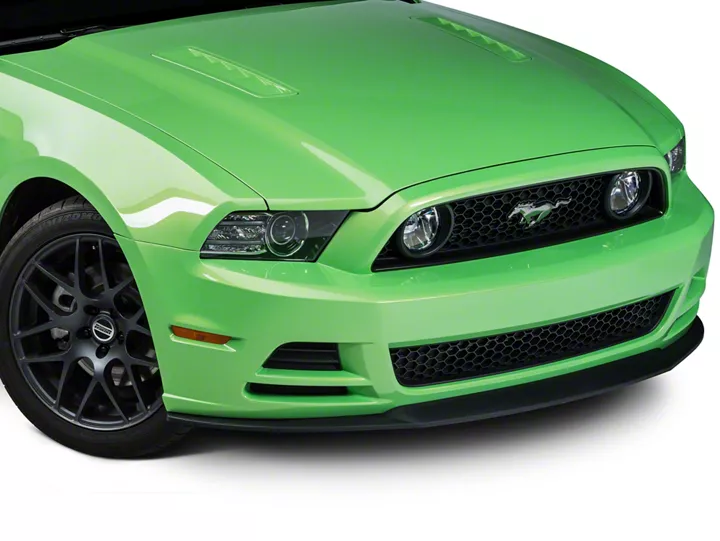
Shop Parts in this Guide
Prior to installation:

2013 Ford Mustang GT
Part 1: Bumper removal
Not required but recommended for easier installation. Elevate the car on jack stands, a lift, or ramps for easier access.
1: Using a small flat head screw driver remove the 8 plastic clips circled below attached to the radiator cover. Then lift off the radiator cover. Set aside for reinstallation.

2: Remove the 4-8mm bolts and 4 plastic clips with a Philips screw driver. Each pair is circled below. Set aside for reinstallation.

3: On each side, remove the 3-7mm bolts circled below attached the bumper on the front side of the wheel well. Remove 1-7mm bolt as shown by the arrow from the bottom of the wheel well closest to the outside.

4: Remove the 3-7mm bolts attached the air deflector furthest back near the oil pan cover. 2 are circled below and the remaining is shown by the arrow below.

5: Along the front of the factory splitter, remove the 12-7mm bolts holding on the air deflector. 5 are shown below circled – the remaining 7 follow the same pattern along the front of the splitter.

6: Slide the air deflector back and out of the way.
7: Unplug the side marker on each side by turning the plug so the flat side faces down before sliding out.

8: Unplug the ambient air thermometer by pulling downward.

9: On each side, pull out on the top half of the bumper to remove the tabs holding it in place.

10: Holding the top of the bumper, pull out and down until the bumper is removed.
***IF YOU HAVE FOG LIGHTS, be sure to disconnect the wiring before pulling the bumper off completely. I rested the bumper on a stool so that I had both hands free to use a small flat head screw driver to pop the harness from the fog light before removing completely.

11: I recommend laying something soft like towels on the floor to rest the bumper on its’ face

Part 2: Splitter Installation
12: Remove the 3 plastic clips on each side with a flat head screw driver on the inside of the bumper.

13: Remove the factory splitter by releasing the 6 clips in the middle inside of the bumper – 2 are shown below.
14: Remove the 8 U clips attached to the inside of the middle of the bumper.


15: Attach 8 U clips supplied with the kit in the same spots as removed in step 14.

16: Temporarily install the new chin splitter to the bumper by attaching 4 bolts supplied – 2 in the middle U clips and 2 in the outside 2 clips installed in step 15.
17: Now 6 holes need to be drilled in the bottom side of the bumper. Ensure the splitter is centered on the bumper, and align the splitter with the bumper before drilling. Look at the gap like in the picture below.

18: Using a 3/16” drill bit, drill through the outermost hole and attach the splitter to the bumper by using an attached U clip and bolt. This is the left circle in the picture below.

19: Once attached, use the splitter as a template to drill the remaining 2 holes on one side. Attach each with a U clip and bolt to the remaining 2 holes shown in picture in step 18.
20: Repeat steps 18 and 19 for the other side of the car.
21: Undo the temporary bolts installed in step 16.
22: Reinstall the bumper to the car and air deflector by following steps 1-11 from Part 1 in reverse.
ENJOY!
Please note – I chose NOT to cut my factory splitter as recommended by Roush. I used the new splitter as the template to drill. The only major thing that I see is that the lips are not present on the new splitter that extend vertically in the wheel well as shown in the picture in step 3. Everything is very secure with this method, and allows you to retain the factory splitter if for some reason you need to switch back.

Installation Instructions Written by AmericanMuscle Customer Mike Marcantonio 4/6/2014
